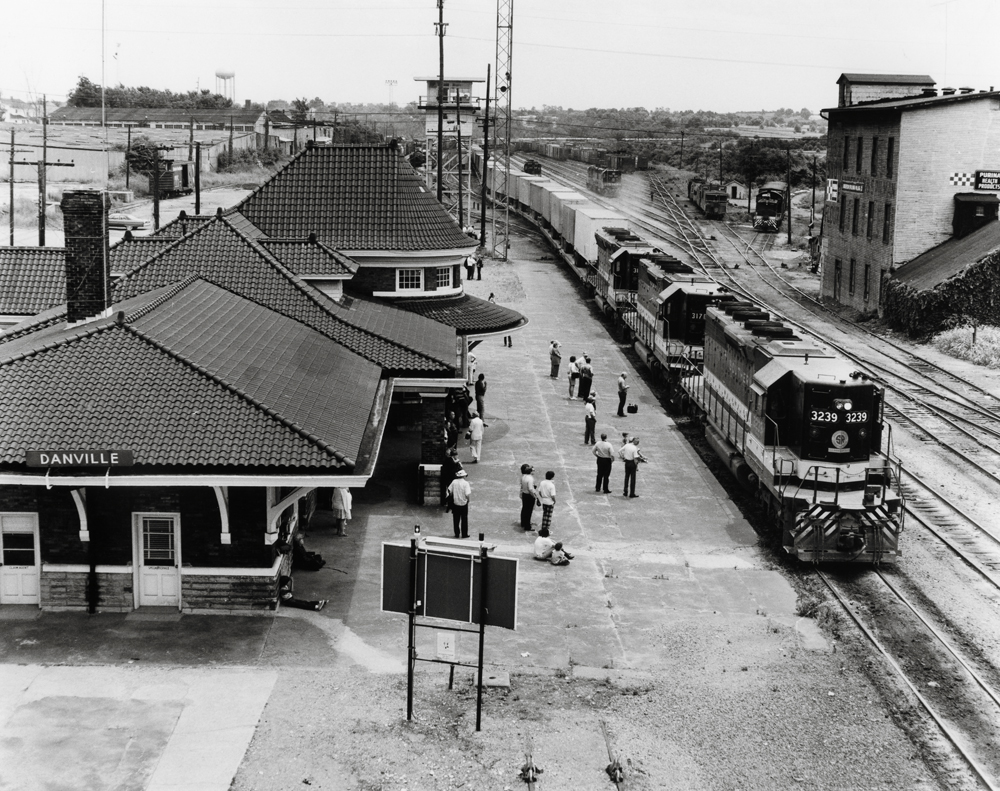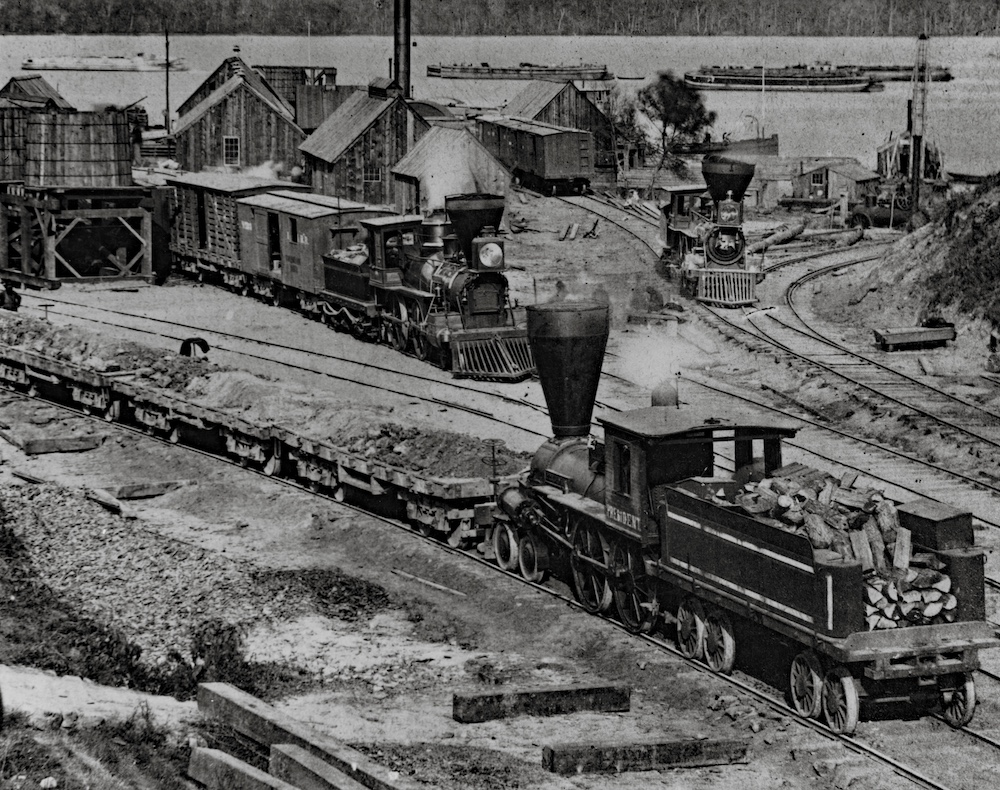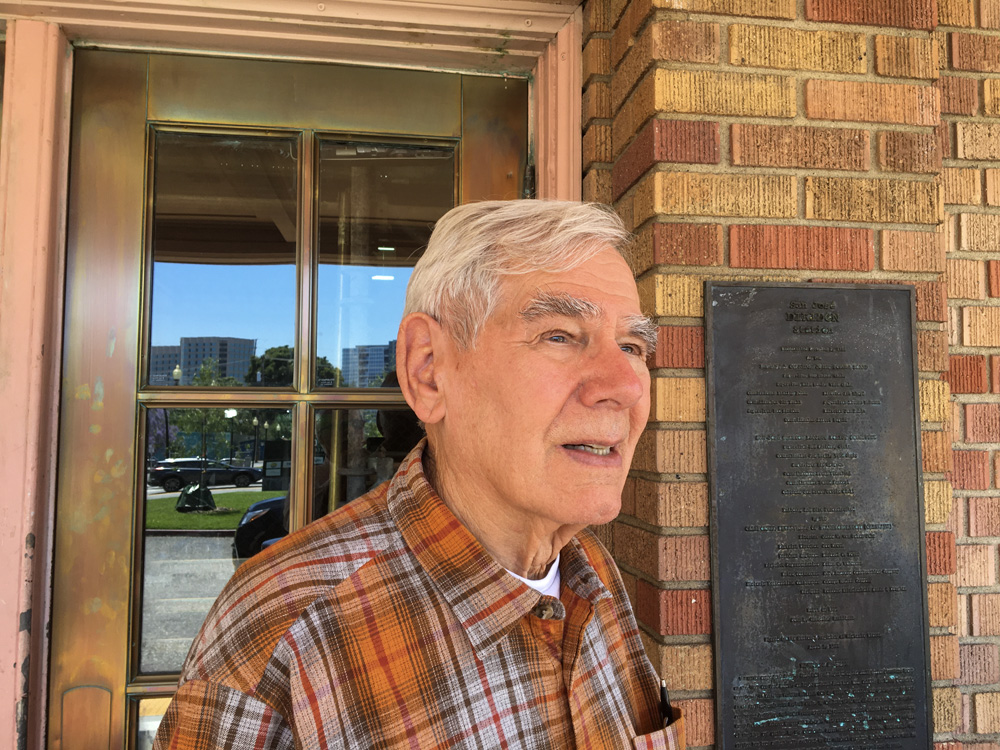Track

The radio comes alive: It’s a transmission about another engineer. We’ll call him Mike Smith. “Mike Smith, what track are you on at Harriman Junction?”
I’m northbound on Norfolk Southern train No. 216, a hot-shot piggybacker on the Kentucky Division — the Cincinnati, New Orleans & Texas Pacific Railway, the Rat Hole — between Chattanooga, Tenn., and Danville, Ky. It’s shortly after 3 a.m. and I’m meeting a southbound that’s waiting in the siding at Sale Creek. I know that Jimmy Leon, the southbound’s conductor, has made this call, just as he has for over 20 years every time we meet on the line of road during the hours of darkness.
Allow me to explain. This takes me back to a night in 1976 or 1977 when Leon was my brakeman on Southern Railway train No. 124. We were on the way to Oakdale, Tenn., (about an hour west of Knoxville, Tenn.) from Chattanooga in the wee hours of a morning.
Train No. 124 was called every night no later than 11:55 p.m. at Chattanooga’s DeButts Yard — whether the yard crews had the train together or not. On this night, however, we got away without too much delay. The train was about 13/4 miles long with three SDs on the point and another SD working as a DPU two-thirds of the way back. The lead unit was an SD45 backing up, which in Southern Railway terminology meant the short, high hood leading, putting the engineer’s control stand on the left side of the cab.
Our train is coming down Rockwood Hill on single track toward Emory Gap somewhere between 2 and 3 a.m. We hear some radio chit-chat that we know is going to affect us. A Knoxville-bound train had just come down the mountains into Oakdale, where a Knoxville crew was taking over from the Danville crew. And there’s signal trouble, which we think will likely delay us getting into Oakdale and off duty. We hear the dispatcher giving the Knoxville train permission to depart: “Train 127 has permission to pass the stop signal on No. 1 Track at Oakdale to single track to No. 1 Track at 26 Tunnel.”
By this time Leon and I are a mile and a half away from double track at EG Tower and have a yellow over green (approach diverging) signal. We know we are going to the No. 2 Track, and I have to hang onto the dynamic brake to hold our train to 40 mph as we hit the switch at EG Tower.
No. 127’s conductor repeats the order (quite loudly since he’s using the big radio in the Oakdale Yard Office).
Now, we’re at the EG Tower switch and I’ll run our locomotives hard up and over the hill before going into dynamic braking again as we drop down into Harriman Junction.
No. 127’s engineer repeats the order.
Up over the hill we go, maintaining 40 mph, and start down New Grade toward Harriman Junction. The distant signal to Harriman Junction is clear. Maybe the Knoxville man will make it onto the double track before we get to the Junction. If so, we’ll be off in 10 minutes or so. And, in bed in 30.
As I start blowing for the crossing at milepost 259, just about a mile from the next signal at the Junction, I hear C.B. Hoff, the dispatcher, call, “Mike Smith, what track are you on at Harriman Junction?”
Without conscious thought I punched the brake application button on the radio remote control panel, making a full-service brake application with one hand and going to full dynamic braking with the other. I clearly remember thinking that we’d better find out what was happening before we went by the signal at the Junction, but that was while the air from the brake application was still exhausting in the cab. We were now less than a mile from the signal, coming down a .75% grade with the DPU locomotive just topping the hill behind us.
And now we hear: “Well C.B. When we come out of the tunnel the light on No. 1 Track was a-flashin’, so we hand-throwed [sic] the switch and we’re starting by No. 4 Storage [Track].” That flashing yellow signal (approach slow) is the proper signal for a train on No. 1 Track, if it is going to be diverted off the route to Chattanooga onto the Knoxville main.
So, with no authority, Smith has put his train southbound on No. 2 Main, and Leon and I are northbound on the same track going 40 mph. Perhaps a mile and a quarter separate us. Maybe a mile and a half, if we were lucky.
We are fortunate to have a DPU as it will shorten the time it takes for the brake application to have any effect. Even so it seems like an exceedingly long time before the brakes start to take hold.
No. 4 Storage Track is about a half-mile long and parallels No. 2 Track. No. 127 is a maybe half mile from Harriman Junction, milepost 258.1 according to the timetable.
When Leon and I came in sight of the signals at Harriman Junction they were all red, stop indication on both tracks. We had about 1,000 feet to go, but we could feel the brakes taking hold. I kept the heel of my left hand on the large red “Big Hole” knob on the radio control panel as we crossed over the Emory River bridge. My plan, such as it was, was to make the emergency application the instant we got off the bridge, but in the end it wasn’t necessary. We stopped about 3 feet from the signal.
After stopping and taking a breath, when we again spoke, it’s to comment on Mike Smith’s heritage — in a less than complimentary manner.
Within a minute or two, here comes No. 127 easing around a curve up to the southbound stop signal on our track — the one on which we had been moving along at 40 mph until just a few minutes earlier. When the time delay finished running (about 5 minutes), Smith got a restricted signal and slowly dragged No. 127 off toward Knoxville. Leon and I got into bed some time later than we planned. Sleep did not come easily.
“You know,” Leon said on our southbound trip later that day, “if we’d had a head-on [collision] they’d have blamed us.” No doubt. That’s how it works, I guess.
I don’t know what happened to Mike Smith, but I never heard him on the radio again. Leon and I were never called to an investigation; the dispatcher never called us on the radio; it was like it never happened.
But for the next 25 years, every time I met Leon on that stretch of track in the wee hours of the morning, I could always count on, “Mike Smith, what track are you on at Harriman Junction?” I hear you, Jimmy Leon. I hear you.














Overheard radio chatter has prevented more than a few collisions. Calling signal indications or OCS clearances as the train progresses may seem pointless, and in theory it is redundant. But on rare occasions there can be a sudden “Let’s both stop” and everyone lives for another day.